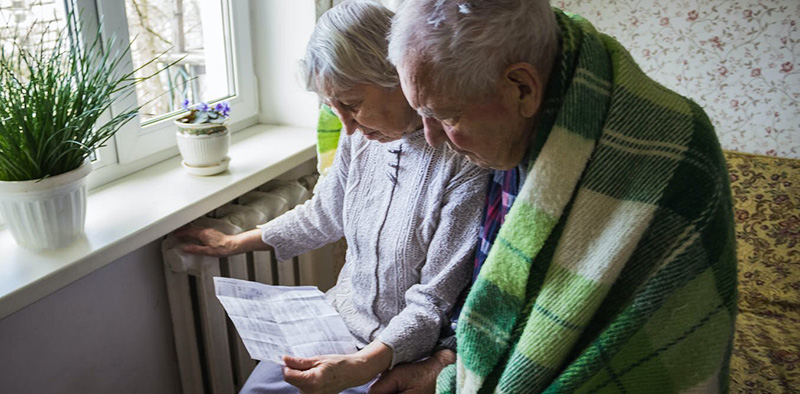How Can Canadians Be Energy Poor?
How Can Canadians Be Energy Poor?

Nearly a million Canadian households lives in energy poverty, the David Suzuki Foundation says, in a new report that urges Ottawa to address this social injustice while setting Canada’s path to net-zero electricity by 2035.
“People are going without heating or cooling in their homes here in Canada,” said report co-author Runa Das, an associate professor of interdisciplinary studies at Royal Roads University in Victoria. “This has real-world impacts on people’s health and quality of life.”
This is why Canada needs a comprehensive energy poverty strategy rooted in the principle of energy justice, DSF writes in its new report, noting that Ottawa’s Clean Electricity Regulation—currently under development with a draft due next year—provide a critical opportunity for Canada to bolster its strategy for delivering on the United Nations’ Sustainable Development Goal 7: ensuring access to “affordable, reliable, sustainable and modern energy for all.”
Done right, the new regulation could slash the levels of energy poverty that currently afflict too many Canadians, DSF says, “helping move Canada to a clean, equitable, and just energy transition.”

Energy poverty occurs “when households have difficulty or cannot attain necessary and adequate home energy services such as space and water heating, cooling, lighting, and use of appliances,” DSF explains, adding that the meaning of the term is still evolving.
Those gaps then ricochet through people’s lives, with debilitating effects on personal health and social relationships and, in extreme cases, leading to loss of life.
Nearly 7% of Canadian households (close to 900,000) are currently experiencing energy poverty—according to the standard definition of spending more than 10% of their income on energy bills. Some 19% of these Canadians live in Atlantic provinces that make up only 8% of Canada’s population. That makes geographic location one of the key reasons for energy poverty, says DSF, along with low incomes, housing conditions, and housing costs.

Weak Policy Could Worsen Injustices
“Households that currently face energy poverty may continue to do so if the distribution of costs and benefits in the electricity transition are not properly addressed,” warns DSF, citing the increasing demand for electricity as the energy transition accelerates.
“There is also a risk that more households could be pushed into energy poverty, with detrimental impacts.”
But Canada may not be as prepared as it should be to ensure an equitable electricity transition, DSF says. Whereas “federal governments in other jurisdictions are taking on greater leadership roles in mitigating and addressing energy poverty, such as through development of energy poverty indicators, measures, and strategies,” Canada has not done so to date.
“Policy attention to distributional consequences and protecting vulnerable households from potential downstream effects has been lacking,” DSF adds.
To enshrine those protections, DSF says the Clean Electricity Regulations must recognize the urgent need for an energy poverty strategy underpinned by quality household energy data—a data set that is lacking at present.
The foundation recommends establishing an energy poverty advisory group “with expertise in science, building science, business, utilities, housing, energy poverty advocacy, civil society, policy-making, and Indigenous governance” to steer the development of a national energy poverty strategy.

Energy is a Service, Not a Commodity
Noting that “energy services such as heating, cooling, lighting and use of appliances and communication technologies are necessary for good quality of life,” DSF urges policy-makers to mandate a “universal clean energy service.”
That would include an “all-season energy disconnection ban” (Canada currently prohibits disconnections for non-payment in winter, but not in summer), and mandated access to cooling services for both homeowners and renters.
“Most jurisdictions in Canada have local bylaws to ensure tenants get adequate heat, such as in the City of Toronto, but renter households are currently not afforded access to cooling,” DSF says.
To make energy affordable to everyone, the report calls for “a combination of government and either tax- or ratepayer-funded programs that offer both ongoing and one-time emergency assistance to provide affordable energy.” Rather than treating electricity as a commodity, as they’ve done in the past, “utilities and regulators need to instead begin to consider providing people with necessary services.”
DSF also advises Ottawa double-down on “opportunities to decarbonize and improve efficiency in the residential sector.” That includes setting energy savings targets for every utility in every province, energy efficiency and renewable energy targets for the building sector, low-income energy efficiency funding, and targeted programs for multi-residential and landlord-owned buildings. Free heat pump and electric hot water heater programs should also be part of the mix, along with community outreach and education with “diverse and inclusive stakeholder engagement.”

















.png)